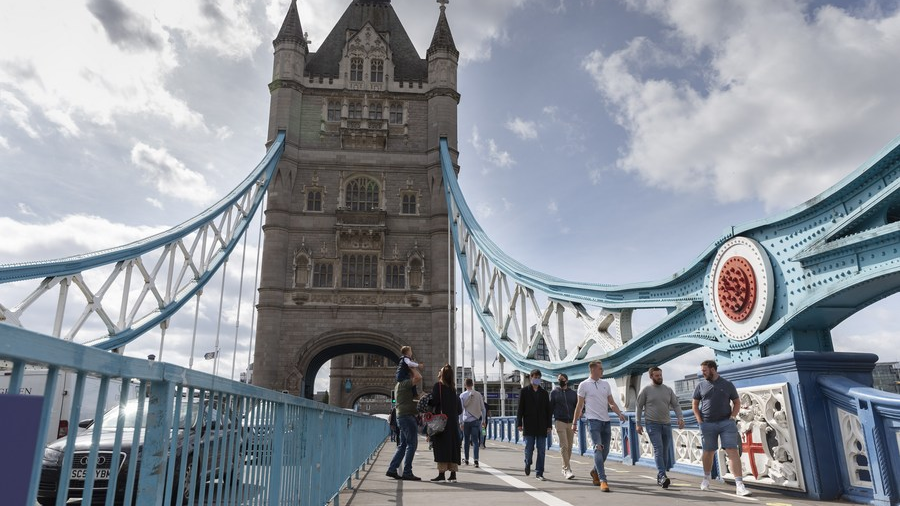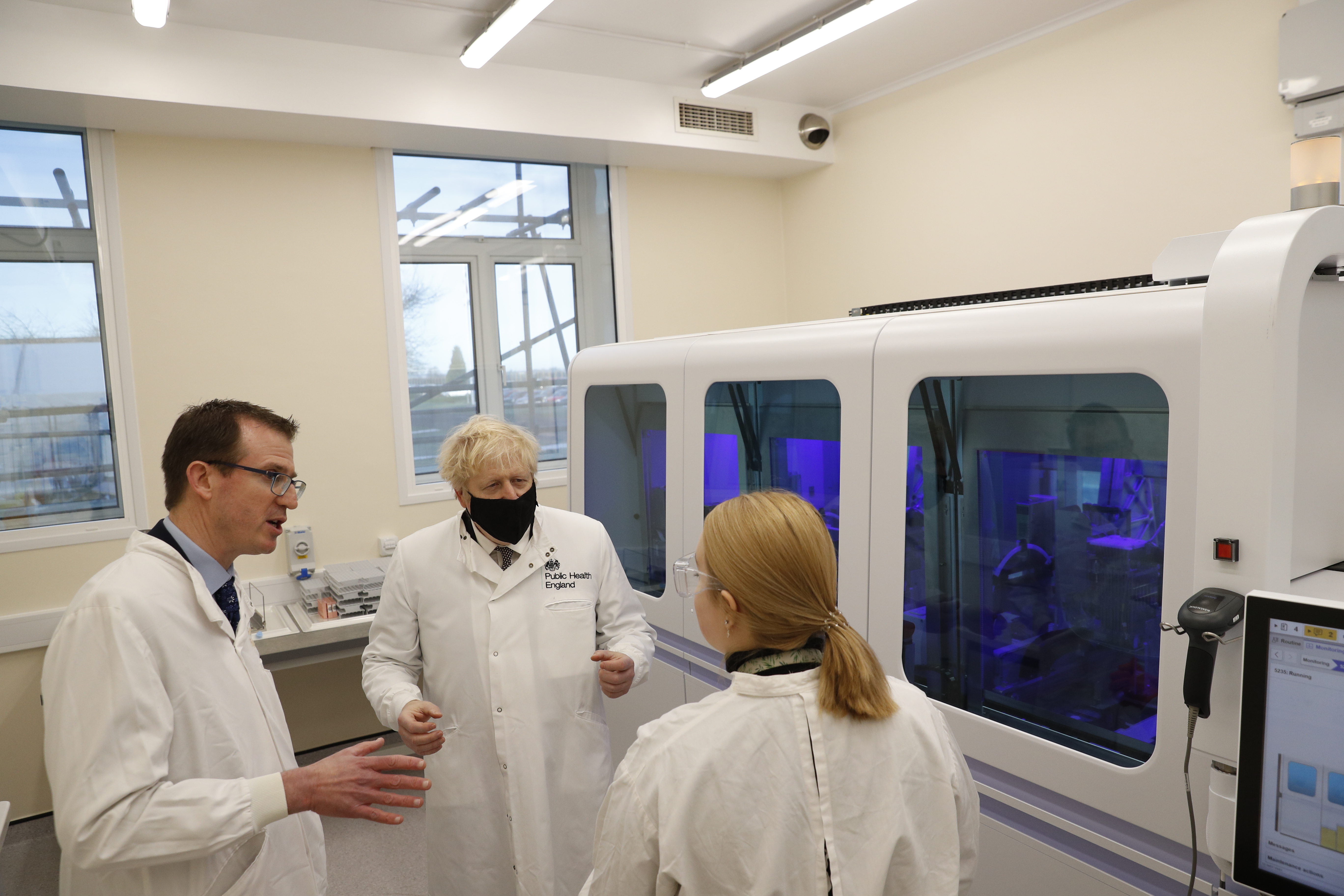
Britain recorded a further 501 deaths within 28 days of a positive COVID-19 test on Thursday, a decrease from 529 a day earlier, government figures showed. /Xinhua
Britain recorded a further 501 deaths within 28 days of a positive COVID-19 test on Thursday, a decrease from 529 a day earlier, government figures showed. /Xinhua
Editor's note: Richard Fairchild is an associate professor at Finance of School of Management, University of Bath. The article reflects the author's opinions, and not necessarily the views of CGTN.
The COVID-19 lockdown restrictions in the UK become ever more baffling! The Government lurches from one extreme to another. At the beginning of the crisis in the UK (March 2020), Prime Minister Boris Johnson announced an initial three-week total lockdown, whereby we were urged to "work at home," and businesses, schools, universities, and shops (apart from supermarkets and food stores) closed. Millions of workers went onto furlough schemes. At the end of the three weeks, Mr Johnson announced that the lockdown would continue throughout the Summer months.
In June, guided by the falling R rate, the Government removed the total lockdown, with non-essential shops and pubs now re-opening, people being encouraged to exercise outdoors, and being able to mix on a wider scale: Britain enjoyed sultry summer weather, blue skies and sunshine, and there were many beach and park parties.
Towards the end of the Summer, Mr Johnson then announced that further lockdowns would be based on a very sensible region-by-region analysis. A three-tier system was introduced, whereby the areas of England with low R rates (below 1), and low and falling infection rates, would be in tier 1, facing the lowest level of restrictions. Tier 2 regions would be those with medium level of cases, and medium restrictions. Tier three areas, with the highest level of cases, and R rates way above 1, would face total lockdown again. In my opinion, a very sensible targeted approach.
Throughout September and October, the Government was warned by various bodies (such ad Public Health England, NICE, university analysts), that, unless we moved away from a tiered system towards a total lockdown again, the health service would be in crisis, and at breaking point: a time may come where the NHS simply could not deal with any non-COVID-19 cases: so we would face the situation where cancer patients, for example, would be turned away.
For two months, the government resisted these calls to get tougher uniformly across the country. Eventually, bowing to this pressure, the government announced a total three week lockdown through November until December 2. On December 2, Britain would come out of the lockdown, and the situation would be reviewed, by looking at the number of infections, and the R rate in various areas, in the run up to Christmas.

Britain's Prime Minister Boris Johnson (C) talks with biomedical scientist Jodie Owen (R) and Director PHE Porton Down Alex Sienkiewicz (L) next to a PCR diagnostics machine in a laboratory during a visit to the Public Health England site at Porton Down science park near Salisbury, England, November 27, 2020. /Getty
Britain's Prime Minister Boris Johnson (C) talks with biomedical scientist Jodie Owen (R) and Director PHE Porton Down Alex Sienkiewicz (L) next to a PCR diagnostics machine in a laboratory during a visit to the Public Health England site at Porton Down science park near Salisbury, England, November 27, 2020. /Getty
Throughout the 2020 crisis, the Government has been guided by the advice, has balanced health and economics, and has taken the sensible approach of looking at the R-rate on a region-by-region basis. So this is what makes the December 2 response very baffling for many people. The government has just announced that, on December 2nd, we will come out of lockdown.
However, according to BBC News, the vast majority of the country (55 million) will end up in the highest two tiers from December 2, facing much tougher restrictions than they did immediately before the November lockdown, with only 1 percent of the population going into the lowest, least restrictive tier 1.
This is in spite of this infection rates going down, and the R-rate being below 1, in many of these areas. Prime Minister Johnson is under pressure to explain why the post-lockdown restrictions are so tough. The plans go to a vote on Tuesday, and if Labour decide to side with the rebels in voting against the plans, they could be thrown into disarray just a day before the restrictions are due to come in!
In my opinion, the Government's response has been reactive, not pro-active, throughout the months of this crisis. Analysts have constantly criticized Mr Johnson's Government for being slow to react, and then being very "volatile" and inconsistent in their reaction. I believe that human psychology also plays a role here. Mr Johnson was criticized throughout September and October for being slow to react to the evolving COVID-19 situation, so, this time, in December, he is going to show that he is tough.
However, with Christmas coming, it reminds us that there is a trade-off to be made between the toughness of the restrictions to reduce the spread of the virus, and saving businesses and livelihoods. Furthermore, it is a delicate balancing act between physical and mental/emotional health this Christmas-time.
A concrete example of the potential economic sacrificing of business at the hands of virus restrictions comes from an industry for which Christmas is normally a strong trading time: the beer brewing and pub industry. Executives at many of Britain's brewing companies are signatories to a letter that will be sent to Mr Johnson, warning that the brewing and pub industry faces its "darkest of moments." The letter warns of huge job losses, and wide-scale pub closures. It will surely be very interesting to observe whether the government's plans for wide-spread stringent restrictions in December are approved by MPs on Tuesday.
(If you want to contribute and have specific expertise, please contact us at opinions@cgtn.com.)

